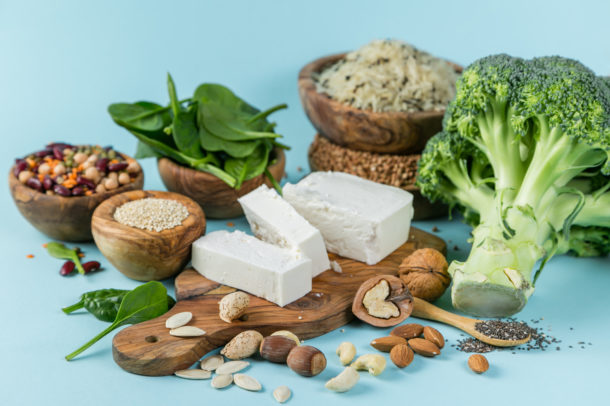By Claire Chartrand MSc. RD
Traditional dietary guidelines for people with chronic kidney disease recommended avoiding many plant-based foods such as beans, lentils, nuts and whole grains out of concern that these foods would raise phosphorous and potassium levels. However, a more plant-based diet has been associated with many health benefits such as lowering blood pressure and cholesterol, better management of diabetes and weight, and even slowing the progression of kidney disease. So, does the CKD population really need to avoid particular plant-based foods?
Over recent years there has been emerging research on how phosphorous is absorbed from different foods:
- Phosphorous from plant-based foods such as beans, lentils, nuts and whole grains is actually poorly absorbed
- Phosphorous from animal-based foods like poultry and meat is moderately absorbed
- Phosphorous in processed foods such as colas and processed cheese slices is highly absorbed
Therefore, the total amount of phosphorous absorbed from plant-based foods can actually be equivalent or lower than the amount of phosphorous absorbed from meat, poultry, etc. In processed foods, phosphorous is often added in the form of sodium phosphate, phosphoric acid, monocalcium phosphate etc. It is important to check the ingredient lists of processed foods for any “phosphate” containing ingredients.
How can you incorporate more plant-based foods into your diet?
- Replace white refined grain products with whole grain products
- Add unsalted nuts to cereals, baking, salads, or at snacks
- Add beans and lentils to soups, salads, chilis, quesadillas, etc. (read our October 2019 blog for instructions to cook legumes, Reducing the Potassium in Legumes)
- Have hummus on vegetables, low sodium crackers, and pitas
- Have nut butter on fruit and low sodium crackers or bread
- Use tofu in stir fries, lasagnas, sandwiches
- Include vegetables and fruits at every meal (cover half of the plate)
What about potassium?
The amount of potassium in plant-based foods can vary. For example, tofu and chickpeas are lower in potassium than soybeans and white beans. For those with a history of high potassium it is important that you meet with your renal dietitian for assistance in planning safe vegetarian meals.
Curried Chickpea Salad (recipe from Spice It Up)
Portions: 6
Serving Size: ¾ cup
Ingredients
- 1 cup water
- 1 cup dry couscous
- 1 can no salt added chickpeas
- ½ cup dried cranberries
- 2 green onions thinly sliced
- ¼ cup fresh cilantro chopped
Dressing
- 2 Tbsp curry powder
- ¼ cup apple cider vinegar
- 1/3 cup canola oil
- 2 tsp fresh ginger grated
- 1 tsp lemon juice
Preparation
- In a medium saucepan, bring 1 cup of water to a boil and prepare couscous following instructions on package. Transfer cooked couscous to a plate to cool
- In a bowl, combine couscous, chickpeas, cranberries, onions and cilantro
- In a small bowl, prepare the dressing: whisk together curry powder, vinegar, canola oil and ginger until combined.
- Drizzle the dressing over the couscous and stir to combine. Add some lemon juice, if desired. Enjoy!
References:
- Kalantar-Zadeh et al. Understanding sources of dietary phosphorous in the treatment of patients with chronic kidney disease. Clin L Am Soc Nephrol 2010; 5: 519-530
- Moe et al. Vegetarian compared with meat dietary protein source and phosphorous homeostasis in chronic kidney disease. Clin J Am Soc Nephrol 2011. 6: 257-264
- Banjeree, T. Yang, L. Deidra C. Dietary patterns and CKD progression. Blood Purification 2016; 41: 117-122
